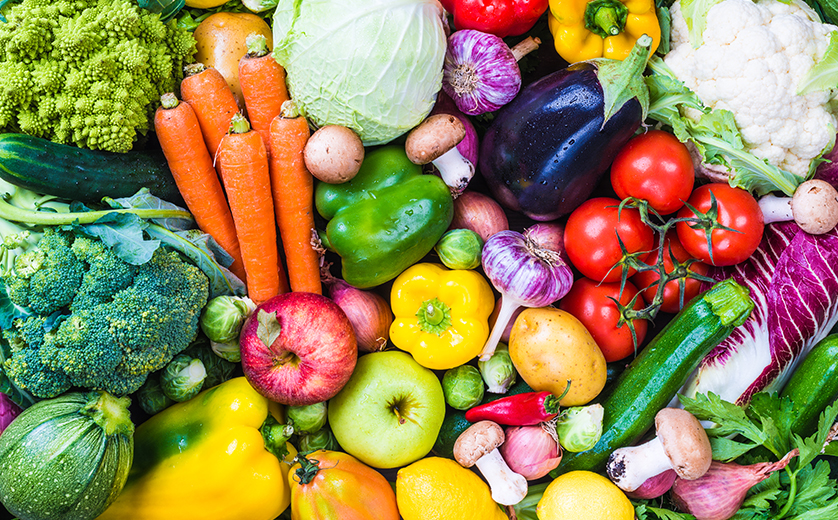By: Kelly McGowan, MPH ‘15
Oatmeal Creme Pies, Chili Cheese Fritos, and a Vess Fruit Punch soda were my favorite afternoon snacks in middle school. Growing up a few blocks south of the Natural Bridge and Kingshighway intersection there was great food around me, or so my adolescent mind thought. Taco Bell, McDonald’s and White Castle were close to home.
Research shows that communities with residents comprising low socioeconomic levels and racial/ethnic backgrounds are more likely to have an abundance of unhealthy food outlets such as fast food restaurants, corner/convenience stores, and liquor stores. These foods are processed, low in nutritional value, and high in calories. The overabundance of unhealthy foods influences eating practices linked to obesity and obesity-related conditions. Such an unfavorable food environment makes it impossible for residents to eat healthy, particularly if lacking transportation. Another problem involves prices of healthy foods, often more expensive than less healthy options. North St. Louis city exhibits the highest diabetes and heart disease mortality rates in the city. Coincidentally, the area lacks access to healthy food options.
Begin driving at White Castle on Kingshighway and Natural Bridge, continue 5 minutes south on Kingshighway, and you will hit Kingshighway and Delmar. Just beyond that intersection, the environment changes. This has been referred to as the Delmar Divide. Residents living south of the Divide are predominantly white, affluent, and have higher property values compared to their northern counterparts. Changes in the food environment and land usage are also observed. Better health outcomes are associated with residents south of the Delmar Divide, as increased access to healthier food options is correlated with lower rates of obesity and obesity-related conditions.
In 2013, Aldi’s opened on Kingshighway and Delmar. This store provided residents the opportunity to exercise healthy eating practices at an affordable cost. Improving access to healthy, affordable foods in underserved communities is associated with lower rates of obesity for adults and children. In addition to improved health, these new stores encourage economic development needed to improve blighted communities. Needless to say, the Aldi’s was a win-win situation for all.
Last week, I learned new construction on that property is the future home of White Castle. The owners of White Castle on Kingshighway and MLK, less than 1 mile north of the Divide, will relocate to a larger space at Kingshighway and Delmar.
Upon learning this, I was confused. The opening of Aldi’s provides residents an opportunity to live healthier lives. The momentum had been gained in facilitating healthy behaviors among residents, and then this happens!
Reflecting on National Public Health Week has inspired me to address the adverse health outcomes for residents north of the Divide. Landowners feel the only way to generate profit is by populating underserved communities with fast food restaurants, perpetuating an endless cycle of poor health. This blatant form of environmental injustice infuriates me. Residents in the Central West End, Clayton, or Ladue would never have to deal with this issue.
In my eyes, health and economic development within areas are not separate entities. Providing a community infrastructure with access to goods, services, and employment generates thriving communities. Such communities exhibit positive health outcomes. Healthy communities generate business and productivity, resulting in revenue.
For instance, the Outer Banks community in North Carolina improved its sidewalk infrastructure, bike paths, and made other changes to create an active-design community. Increased physical activity produces a host of positive health outcomes. This investment also resulted in an increase in business and tourism generating $60 million per year, 9 times the initial investment funding those improvements.
Also, the New York Academy Medicine and Urban Institute reviewed studies involving community-based efforts that improved access to healthy foods, public transit, and recreational opportunities. These improvements are forecasted to reduce diabetes rates, hypertension, heart disease, and stroke by 5% within the next 2-5 years. For every $1 invested in those community interventions, approximately $7 is saved in health care expenditures, ultimately saving $1.3 billion within 5 years. Given the higher cost of living in New York, imagine how far that money could go in St. Louis.
Considering the potential dollars generated in the development of healthy communities, it makes no sense to do the opposite.
If this gets published, I have one question for the landowners, alderperson representing the area, and the city of St. Louis – are White Castle sliders worth more than human lives north of the Delmar Divide?
